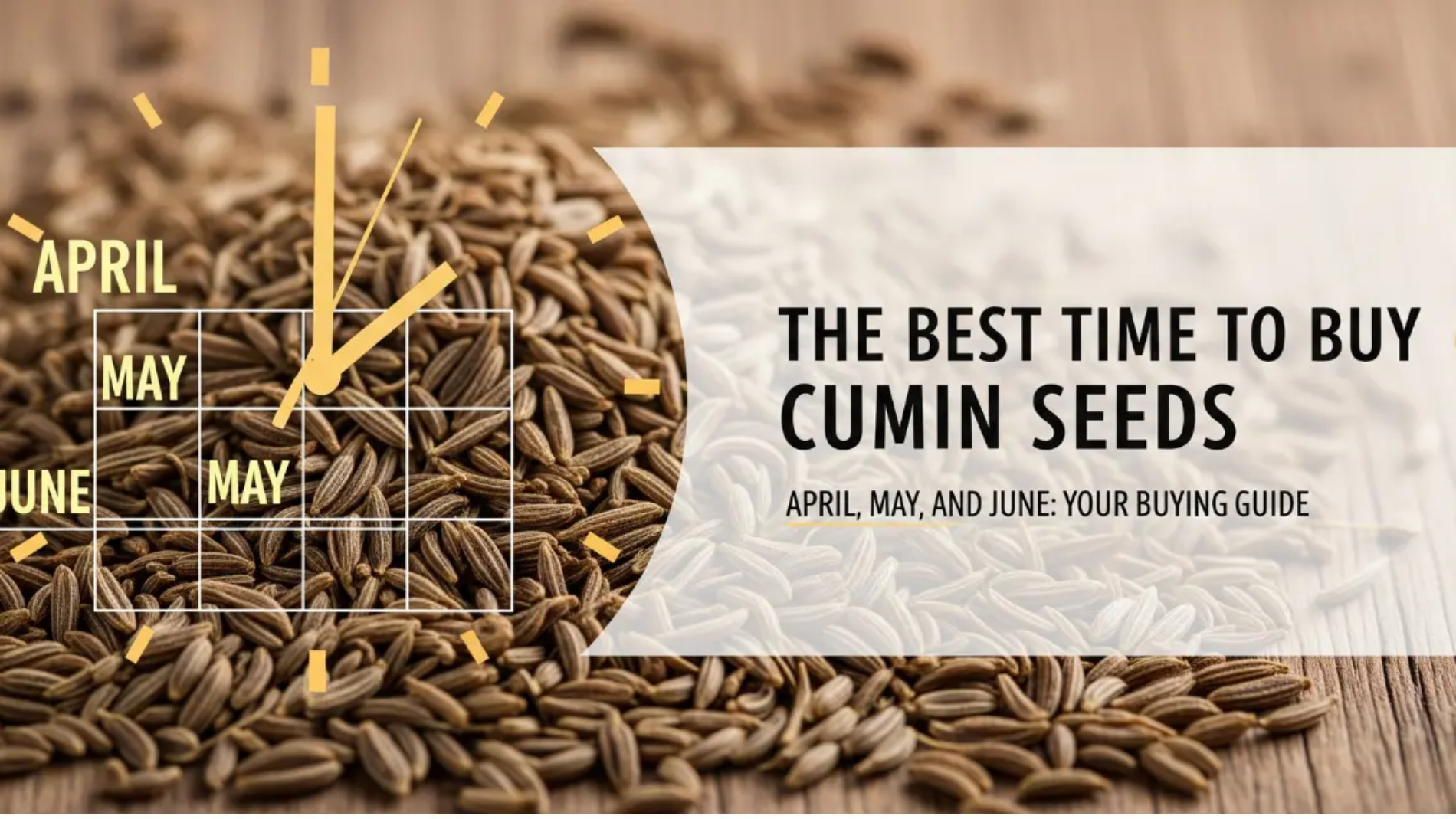For importers and bulk buyers in the global spice trade, timing is everything. When purchasing an agricultural commodity like the cumin seed jeera the question of “when” you buy can be just as critical as “what” you buy. The annual cumin seed price is not static; it ebbs and flows with the seasons, driven by a predictable cycle of sowing, harvesting, and market arrivals.
Understanding this cycle is the key to optimizing your procurement strategy, ensuring you get the freshest product at the most competitive price. As India is the world’s largest producer and exporter of this aromatic spice, the entire global market moves in rhythm with the Indian cumin harvest. This guide will break down the cumin seed’s annual calendar to help you make informed, strategic purchasing decisions.
Understanding the Cumin Seed Annual Cycle in India
Cumin is a winter crop, known as a Rabi crop in India, with a distinct and relatively short cultivation cycle. The entire market sentiment for the year is shaped by the events within these few months.
Sowing Season (October – December): Farmers, primarily in the key states of Gujarat and Rajasthan, begin sowing cumin seeds. Market analysts and experienced cumin seed closely monitor the total acreage sown during this period, as it provides the first forecast of the potential size of the upcoming crop.
Growing Season (December – February): This is a critical phase where the crop is vulnerable. Weather conditions play a huge role. Favourable, cool, and dry weather can lead to a bumper crop, while events like frost or unseasonal rain can significantly damage yields, creating future price volatility.
Harvest Season (February – March): The cumin plants mature and are harvested. This is an intensive period where the quality and volume of the year’s supply are determined.
Market Arrivals (March – May): This is when the action truly begins. The freshly harvested cumin seed starts arriving in large volumes at major agricultural market yards (mandis), especially in Unjha, Gujarat, which is the global epicentre for cumin trading.
Spice Up Your Business with Authentic Indian Flavors
Import and Export Excellence from India!

The Strategic Window: When to Place Your Bulk Cumin Seed Order
Based on this cycle, there are distinct periods for buying, each with its own advantages and disadvantages.
The Prime Buying Period: Post-Harvest (April to June)
This is, without a doubt, the best time for importers to secure their bulk cumin seed contracts for the year.
Why? During these months, market supply is at its absolute peak. The massive influx of the new harvest leads to downward pressure on the cumin seed price, making it the most competitive point in the year. The product is also at its freshest, boasting the highest volatile oil content, which translates to superior aroma and flavour. This is the ideal window to lock in large-volume orders.
The Shoulder Season: Mid-Year (July to October)
If you miss the prime window, this period still offers good opportunities.
What happens? By now, a significant portion of the harvest has been sold and moved into storage. Prices tend to stabilize or begin a slow, gradual climb as supply is no longer at its peak. The quality of well-stored cumin seed remains excellent. It’s a stable period for regular purchasing, though you may have missed the year’s lowest prices.
The Lean Season: Pre-Harvest (November to January)
This is generally the most challenging time to make large purchases.
What happens? The previous year’s stock is dwindling. The market is driven by speculation about the new crop being sown. With supply at its lowest, prices are typically at their highest point in the annual cycle. It is advisable to rely on pre-secured stock during this time and avoid entering the market for major new contracts unless absolutely necessary.
Factors That Can Disrupt the "Best Time
While the cycle is a reliable guide, external factors can create exceptions:
Weather Volatility: A sudden weather event can override typical seasonal trends, causing prices to spike unexpectedly.
Global Demand: A sudden surge in demand from major importing regions can prop up prices even during the peak arrival season.
Carry-Over Stock: If the previous year had a bumper crop, the large carry-over stock can keep prices subdued even as the new season begins.
Government Policies: Any changes in agricultural or export policies can influence market dynamics.
Partnering with the Right Cumin Seed Exporter
Navigating these market dynamics requires more than just reading a calendar. This is where a strategic partnership with a reliable cumin seed exporter becomes invaluable. A good exporter is not just a seller; they are your eyes and ears on the ground in India. They provide crucial market intelligence, insights into crop health, and data-driven advice on when to enter the market. They also possess state-of-the-art storage facilities to ensure that the bulk cumin seeds you buy in April retains its quality and freshness for months to come.
In conclusion, while the April-to-June post-harvest window offers the most strategic advantage for price and freshness, your purchasing decisions should always be backed by insights from a trusted partner.
Frequently Asked Questions (FAQs)
1. What is the Unjha market, and why is it important for cumin?
Unjha, in Gujarat, India, is the world’s largest regulated wholesale market for cumin seed jeera Prices and quality standards set in Unjha often influence the entire global cumin trade.
2. How much does the cumin seed price fluctuate during the year?
The price can fluctuate significantly. It’s not uncommon to see prices in the lean season (Nov-Jan) be 15-25% higher, or even more, than the lows seen during the peak arrival season (Apr-Jun), depending on the year’s crop size.
3. Can I lock in a price for a full year’s supply?
Yes, many cumin seed exporter offer long-term contracts. The best time to negotiate and lock in such a contract is during the prime buying period (April-June) when prices are most favorable.
4. Is cumin seed from the old crop of lower quality?
Not necessarily. If stored correctly in cool, dry, and clean conditions, cumin seedcan retain its quality for over a year. However, the freshest crop will always have the highest volatile oil content and the most potent aroma.
5. How does the monsoon season in India affect the cumin crop?
Cumin is a winter crop and requires very little water. An erratic or heavy monsoon (June-September) has an indirect effect, primarily by influencing soil moisture levels for the upcoming sowing season in October.
6. What are “Europe Grade” and “Singapore Grade” cumin?
These are quality grades based on purity. “Singapore Grade” typically refers to 99% purity, while the higher-quality “Europe Grade” refers to 99.5% purity, with stricter limits on foreign matter.
7. Do all regions in India harvest cumin at the same time?
The harvest time is largely consistent, occurring between February and March in the primary growing states of Gujarat and Rajasthan, which together account for the vast majority of Indian Cumin production.
8. How can I stay updated on the cumin crop forecast?
Your most reliable source is your export partner. Experienced cumin seed exporter have networks on the ground that provide real-time updates on sowing progress, weather, and crop health, which they can share with their clients.



Leave A Comment